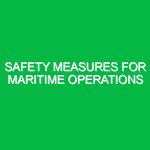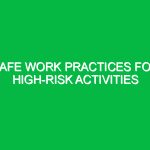Introduction to Health and Safety Compliance Audits
Health and Safety Compliance Audits are systematic evaluations designed to assess an organization’s adherence to health and safety regulations and standards. In an era where occupational safety is paramount, these audits serve as critical tools in the Health, Safety, and Environment (HSE) domain. They help organizations identify risks, ensure compliance with legal obligations, and foster a culture of safety that protects employees, customers, and the public.
Imagine walking into a manufacturing facility where safety protocols are not just words on a poster but ingrained in the daily routine. Each employee knows their role in maintaining a safe environment, resulting from rigorous compliance audits. This scenario exemplifies the essence of Health and Safety Compliance Audits: a proactive approach to identifying potential hazards and implementing necessary changes before incidents occur.
These audits are not merely regulatory checkboxes; they are integral to a company’s success. By ensuring compliance, organizations can minimize workplace accidents, reduce liability, and enhance their reputation. In a world where information is at our fingertips, the importance of staying compliant cannot be overstated.
Understanding Hazards and Risks in Health and Safety Compliance Audits
When conducting Health and Safety Compliance Audits, it is essential to identify potential hazards and risks. These can vary significantly depending on the industry and specific workplace environments. Common hazards include:
1. Physical Hazards
Physical hazards encompass anything that can cause physical injury. This includes machinery, slips and falls, and noise exposure. For instance, in a construction site, workers are often exposed to heavy machinery and scaffolding. Compliance audits should assess whether safety measures such as guardrails and proper signage are in place.
2. Chemical Hazards
Chemical hazards arise from exposure to harmful substances. This could be anything from cleaning agents to industrial chemicals. A noteworthy example is the tragic incident at a chemical plant where inadequate safety protocols led to an explosion. Compliance audits must ensure that Material Safety Data Sheets (MSDS) are accessible and that employees are trained in handling hazardous materials.
3. Biological Hazards
Biological hazards include exposure to bacteria, viruses, and other pathogens. Healthcare facilities, for example, must adhere to strict protocols to prevent infection. Compliance audits in such environments should examine sterilization processes and personal protective equipment (PPE) usage.
4. Ergonomic Hazards
Ergonomic hazards relate to workplace design and the physical strain it places on employees. For instance, office workers may experience repetitive strain injuries from improper workstation setups. A thorough compliance audit evaluates ergonomics to promote a healthier work environment.
Safety Precautions and Best Practices
Identifying hazards is only half the battle; implementing safety precautions is crucial. Here are some best practices related to Health and Safety Compliance Audits:
1. Regular Training and Awareness Programs
Continuous education is vital in maintaining compliance. Training programs should cover the latest regulations and safety protocols. For example, a manufacturing company might hold monthly safety briefings to keep employees informed about changes in safety standards.
2. Comprehensive Documentation
Accurate record-keeping is essential for compliance audits. Organizations should maintain documentation for safety inspections, incident reports, and training sessions. This not only aids in audits but also creates a culture of accountability.
3. Engaging Employees in Safety Practices
Involving employees in safety initiatives fosters a sense of ownership. For instance, consider a situation where workers are encouraged to report unsafe conditions without fear of retribution. This open communication can lead to timely interventions and a safer workplace.
4. Regular Equipment Maintenance
Ensuring that machinery and equipment are well-maintained is a key aspect of safety compliance. Regular inspections can prevent malfunctions that may lead to accidents. A notable case involved a factory where a lack of maintenance led to a significant injury, highlighting the importance of routine checks.
5. Conducting Mock Audits
Mock audits can prepare organizations for actual compliance assessments. These practice runs help identify weaknesses in safety protocols and allow for timely corrective actions before the official audit occurs.
Regulations and Standards Governing Health and Safety Compliance Audits
Several regulations and standards govern Health and Safety Compliance Audits. Understanding these legal frameworks helps organizations stay compliant and protect their workforce. Here are some key regulations:
1. Occupational Safety and Health Administration (OSHA)
In the United States, OSHA sets forth regulations to ensure workplace safety. Compliance audits must align with OSHA standards, which cover various aspects of workplace safety, including hazard communication and personal protective equipment.
2. International Organization for Standardization (ISO)
ISO 45001 is an international standard for occupational health and safety management systems. Organizations aiming for certification must undergo thorough audits to demonstrate compliance with these standards.
3. Environmental Protection Agency (EPA)
For organizations dealing with hazardous materials, adhering to EPA regulations is crucial. Compliance audits should ensure that proper disposal methods and environmental safety measures are in place.
4. National Fire Protection Association (NFPA)
The NFPA provides guidelines for fire safety in various environments. Audits should assess adherence to these guidelines, particularly in industries where flammable materials are present.
The Benefits of Conducting Health and Safety Compliance Audits
The advantages of Health and Safety Compliance Audits extend beyond mere legal compliance. Organizations that prioritize these audits often experience several benefits:
1. Enhanced Employee Morale
When employees feel safe at work, morale tends to improve. A culture of safety not only reduces accidents but also boosts productivity. Employees are more likely to engage and contribute positively when they know their well-being is a priority.
2. Reduced Insurance Costs
A strong safety record can lead to lower insurance premiums. Insurance companies often reward organizations that demonstrate a commitment to safety through compliance audits and proactive measures.
3. Improved Reputation
In today’s interconnected world, a company’s reputation can make or break its success. Organizations known for their safety standards often attract better talent and gain customer trust. Compliance audits play a pivotal role in establishing and maintaining this reputation.
4. Legal Protection
Compliance with health and safety regulations offers legal protection in case of workplace incidents. If an organization can demonstrate that it conducts regular audits and adheres to safety standards, it may mitigate liability in lawsuits.
Conclusion: The Path to a Safer Workplace
Health and Safety Compliance Audits are not just necessary evils; they are vital components of a successful business strategy. By systematically identifying hazards, implementing safety precautions, and adhering to regulations, organizations can create safer work environments that benefit everyone involved.
As industries evolve and new challenges emerge, the importance of these audits will only grow. Organizations that embrace a proactive approach to health and safety will not only comply with regulations but will thrive in today’s competitive landscape. Remember, safety is not just a checklist; it’s a commitment to the well-being of every individual within the organization.


